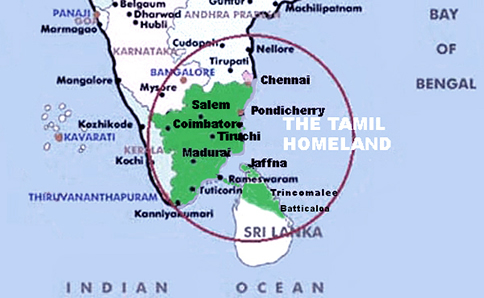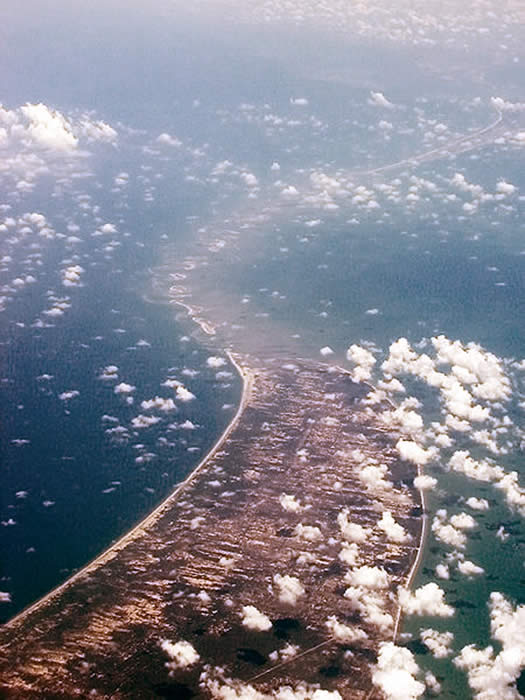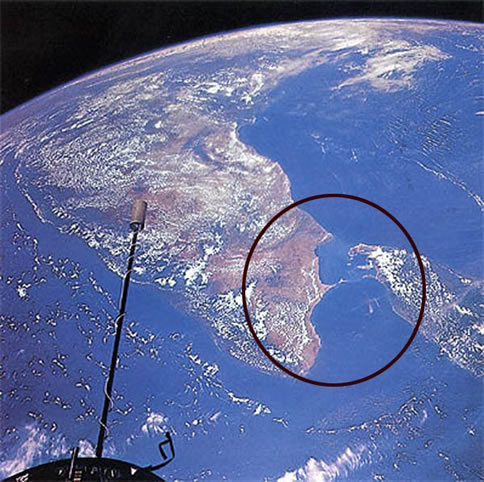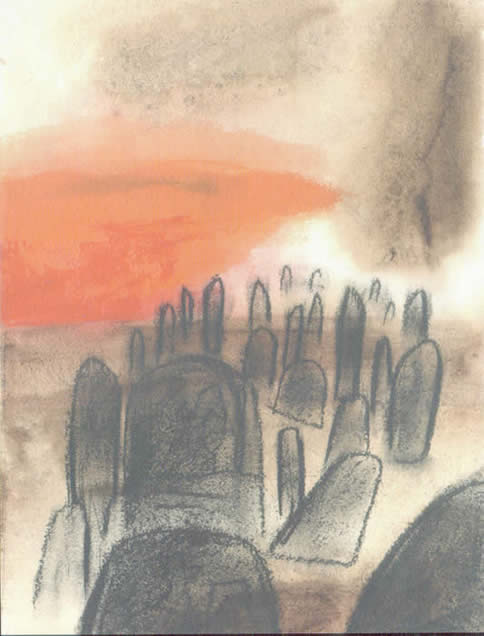Maveerar Naal 2009
மாவீரர் சுமந்த கனவுகளில் ஒரு தேசம் தெரிகின்றது...
by Nadesan Satyendra, TamilNation.org, November 11, 2009
Today, the 11th of November is Remembrance Day for the countries of the British Commonwealth such as Great Britain, Canada, Australia and South Africa as well as for some European countries such as France and Belgium. The Cenotaph (meaning Empty Tomb) in London carries the simple inscription "The Glorious Dead" and it is here that a Remembrance service is held each year at 11 am on the Sunday nearest 11 November.
For Tamils living in many lands and across distant seas, the 27th of November is the day on which they remember, honour and mourn those who have given their lives in the continuing Tamil struggle for freedom. It is the day marked by the death of Shankar in 1982 - the first death of a cadre of the Liberation Tigers of Tamil Eelam.
27 November 2009 marks the first Maaveerar Naal without the physical presence of Velupillai Pirabakaran - a leader who will live in the hearts and minds of generations of Tamils yet unborn as the undying and heroic symbol of Tamil resistance to alien rule.
27 November 2009 also serves to mark the broadening and deepening of the struggle of the Tamil people for freedom - a broadening and deepening reflected in the self immolation in February and March 2009 of Muthukumar, Ravichandran, Thamil Venthan, and Sivaprakasam not from Tamil Eelam but from Tamil Nadu.
It is a a broadening and deepening to which Seeman in Tamil Nadu recently gave poignant expression -
"உலகம் எங்கும் வாழ்ந்தாலும், நாம் தமிழர்... நீயும் தமிழன், நானும் தமிழன்... தமிழனுக்கென்று ஒரு நாடு வேண்டும்.. " - சீமான் வழங்கியநேர்காணல் - 5 November 2009
The Chola Tiger symbol which Velupillai Pirabakaran selected and the name Liberation Tigers of Tamil Eelam which he gave to the movement that he founded, are rooted in the ancient heritage of the Tamil people - roots which reach out, touch and move the hearts of millions of Tamils living today in many lands and across distant seas - a nation without a state.
>And during the past several years, Tamils who trace their origins to their homeland in Tamil Eelam and Tamil Nadu ...

... and living today in many lands, including Australia , Andhra Pradesh , Bahrain , Botswana, Canada, Delhi , Denmark , Eelam , Fiji, Finland, France, Germany, Guadelope & Martinique, Hong Kong , Indonesia, Italy, Karnataka, Kerala, Kuwait, Maharashtra, Malaysia, Manipur, Mauritius, Myanmar , Netherlands , New Caledonia & Tahiti , New Zealand , Norway , Quatar, Reunion , Saudi Arabia, Seychelles, Singapore, South Africa, Sweden, Switzerland,Tamil Nadu, Trinidad, United Arab Emirates, United Kingdom, USA have come together on Maaveerar Naal to remember and honour their brothers and sisters who gave their lives for freedom.
"A nation is a partnership between those who are living, those who are dead and those who are to be born" Edmund Burke
The heroic armed struggle for freedom in Tamil Eelam, symbolised by the Chola Tiger emblem and led by Velupillai Pirabakaran; and the answering responses in Pongu Tamil Vizhas and Maveerar Naals around the world; the Tamil cultural renaissance of the latter part of the 19th century and the early 20th century, on the foundations built by Swaminatha Iyer from Tamil Nadu and Thamotherampillai from Tamil Eelam; the rise of the Dravida Tamil national movement of the first half of the 20th century led by Periyar and C.N.Annadurai; and the internationalisation of Tamil studies by the monumental efforts of Father Thaninayagam from Tamil Eelam; are but tributaries flowing into one river - the river of the growing togetherness of more than 80 million Tamil people - and this river is not about to flow backwards.

View of Rameswaram in Tamil Nadu from Talaimannar in Tamil Eelam
It is not surprising therefore that those who would conquer and rule the Tamil people continue their efforts to keep the Tamil nation divided because they know that a people are more easily subdued and assimilated if that people are divided into small digestible morsels.
The Sinhala Sri Lanka government seeks to divide the people of Tamil Eelam into Colombo Tamils, Plantation Tamils, Batticaloa Tamils, Trincomalee Tamils, Vanni Tamils, Jaffna Tamils and so on. The New Delhi Indian government seeks to separate Eelam Tamils from Karnataka Tamils, from Bombay Tamils, from Tamil Nadu Tamils, from Kerala Tamils, from Andhra Tamils, from Manipur Tamils and so on. Western governments intent on securing their strategic interests in the Indian Ocean are concerned to encourage Eelam Tamils to see themselves as separate from their brothers and sisters in the Indian sub continent, because they know only too well the force that an undivided Tamil nation will wield in the Indian Ocean region.

And so, New Delhi as well as Western governments will encourage Tamils as a people to remain as supplicants and pleaders for justice and freedom. Having joined hands with Sinhala Sri Lanka in its genocidal onslaught on the people of Tamil Eelam, they will hold themselves out as brokers for peace and justice. That is understandable. Tamil supplicants and pleaders are useful weapons in the armoury of New Delhi and the West - weapons that may be used by each to advance each of their own strategic interests in the island of Sri Lanka, when the occasion so demands.
It is also understandable that New Delhi as well as Western governments will be concerned to 'support' the Tamil struggle so that they may direct the struggle to 'grow in a particular direction' and in that way manage it. To this end, these governments will at all times be vigilant to prevent the Tamil national movement from building its strength from its own people. Empires do not build partners. Kosova with NATO in command and East Timor with Australian armed forces are a few recent examples. Empires build colonies. That was true of the British empire. It is also true of the empires of today, including the Indian empire.
New Delhi as well as Western governments know only too well that a genuine leadership of the Tamil people will not come from English speaking Tamils speaking to other English speaking Tamils in English. They know it will not come from 'part timers' whose full time occupations are heavily dependent on retaining the goodwill of the 'establishment' in the states in which they reside. They know that such a 'leadership' being rootless will all the more readily become a willing tool (whether knowingly or unknowingly) of international actors and agencies who are concerned to advance their own interests in the Indian Ocean region. And for that very reason they will encourage the emergence of such a rootless 'leadership'. After all internal subversion of national liberation movements is not something new.
. "...The Shah of Iran once said that in his role as the gendarme of the region he had two main weapons for dealing with the revolutionary threat which existed in the region. First, was direct intervention. This was applied in the case of Oman in 1973, and also in the case of Baluchistan when the Shah provided armaments and military finance for the Pakistani state's repression in the area. The second weapon was internal subversion of the national liberation movements among the various nationalities. This method was applied in Kurdistan. The goal, ofcourse, was to allow the national movement to grow in a particular direction in order to defeat it. The case of Kurdistan was classic. The Shah said openly that the Kurdistan operation was relatively cheap for him. With 30 million dollars the job was done. He simply supported Kurdistan to destroy it. " (Murad Khan of the Baluchistan People's Liberation Front, speaking to Raymond Noat - Interview quoted in Tariq Ali's 'Can Pakistan Survive')
"The (US) President, Dr. Kissinger and the Foreign head of state (the Shah) hoped our clients (the Kurds) would not prevail. They preferred instead that the insurgents (the Kurds) simply continue a level of hostilities sufficient to sap the resources of our ally's neighbouring country (Iraq). This policy was not imparted to our clients (the Kurds) who were encouraged to continue fighting. Even in the context of covert action, ours was a cynical enterprise." Select Committee on Intelligence of the U.S. House of Representatives (under the chairmanship of Otis Pike) on 1 November 1975)
Those who dance with a 8000 pound gorilla may find the experience exciting but the end is usually preordained. The fate of the (permanent?) Tibetan Government in Exile is a case in point. Fifty years after the formation of the Tibetan Government in Exile, and funding by the CIA, Tibet is no closer to securing its freedom from Chinese rule - though ofcourse the Tibetan Government in Exile has been a useful 'human rights' weapon for the US to beat China with from time to time. Meanwhile, Tibet itself has been settled (colonised) with Chinese and its demography radically changed. The Dalai Lama today speaks of 'autonomy' and no longer of independence. But that too of no avail. And the Tibetan Government in Exile with a Tibetan Parliament in Exile (elected by a 'grass roots' Tibetan diaspora) is left with websites which promote the justice of the Tibetan cause. And there is no shortage of Tibetan websites: Government of Tibet in Exile, Central Tibetan Administration, Tibetan Parliament in Exile, London Office of the Government of Tibet in Exile, Office of Tibet in New York, Office of Tibet in Pretoria, South Africa and so on. The short point is that Tibet will not get freedom until the Chinese empire (like the Soviet empire and the British empire before it) disintegrates. And increasing numbers of Tamils are being driven to conclude that the Tamil nation will not become free until the Indian empire goes the way of all empires. That is, unless New Delhi begins to recognise that the Indian 'Union' will survive only if it reinvents itself as a free and equal association of independent states - and that the European Union is a pointer to the direction that the Indian 'Union' will need to take if it is not to implode.
Again the recent drama enacted in the United States concerning Sinhala Sri Lanka General and US Green card holder Sarath Fonseka, will hopefully open the eyes of those Tamils who were persuaded to send messages of thanks to the US Homeland Security for having requested a meeting with the General to discuss 'war crime issues'.
"The US decision to target Gotabhaya Rajapakse, rather than Fonseka, points to its underlying motivations. These have nothing to do with concern about war crimes and human rights abuses in Sri Lanka, but rather are aimed at pressuring the Rajapakse government over its growing economic and political ties with US rivals, particularly China. By undermining the Rajapakse brothers, Washington possibly hopes to install a government more amenable to its interests. The UNP in particular is noted for its close alignment with the US in the past." The General, the President & the Indian Ocean, 9 November 2009
It is right that Tamils are concerned about the horrendous war crimes committed by Sinhala Sri Lanka but adhering to the old adage ' march separately and strike together', will enable us to preserve our own integrity at every stage of the marches ahead - preserve our integrity from later attacks by those who may for now befriend us to further their own agendas. Yes, the Tamil people too have an agenda. But that agenda is not a hidden agenda. It is not a secret agenda. It may be openly stated - it is freedom from alien rule. Subhas Chandra Bose was right to point out in 1933 in Friars Hall, London, some 14 years before India's independence -
".. Every great movement starts from small beginnings.. Our first task will be to gather together a group of men and women who are prepared to undergo the maximum sacrifice and suffering which will be necessary if we are to attain success in our mission. They must be whole-time workers - 'freedom-intoxicated' missionaries - who will not be discouraged by failure or deterred by difficulty of any kind and who will vow to work and strive in the service of the great cause till the last day of their lives. ...these 'morally prepared' men and women .. will have to make... a scientific and critical study of the rise and fall of empires in other ages and climes. Armed with this knowledge, they should proceed to make a scientific examination of the strong and weak points of the British Government in India in relation to the Indian people and a similar scientific examination of the strong and weak points of the Indian people in relation to the British Government. ..
Subhas Chandra Bose was right to emphasise the need for a 'critical study of the rise and fall of empires in other ages and climes.' Indian independence would not have happened when it did if not for the Second World War and the collapse of the British Empire.
"...Nothing intensifies the national feelings and aspirations of a colonial people like a great war. Those who have had anything to do with the two wars, know what effect the 1914-18 a world war had on the feelings and aspirations of the Indian people. National waves which rise slowly or are accelerated during wartime. and rise very high after the war. During the war, they are controlled to some extent; but after the war, they break all shackles and rise very high. Today, in India, no, in the whole Asian continent, they are dashing against the stones and, rocks, breaking them to pieces. I have no doubt about it." British Prime Minister Clement Atlee during the debate on Indian Independence in the UK Parliament, 1946 quoted in 'The Freedom Struggle and the Dravidian Movement' by P.Ramamurti 1987
"... We have recruited our workers for the war; they have been demobilised after the war. They are required to repair the factories damaged by Hitler's bombers. Moreover, they want to join their kith and kin after five and a half years of separation. Their kith and kin also want to join them. In these conditions if we have to rule India for a long time, we have to keep a permanent British army for a long time in a vast country of four hundred millions. We have no such army...." Sir Stafford Cripps, UK President of Board of Trade, Head of Cabinet Mission to India, during the debate on Indian Independence in the UK Parliament, 1946 quoted in 'The Freedom Struggle and the Dravidian Movement' by P.Ramamurti, 1987
But the Second World War did not happen because of the efforts of Subhas Chandra Bose. It happened because of conflict amongst the imperial powers themselves. That was the 'outside' of the struggle for freedom. Subhas Chandra Bose was also right to emphasis the need for the same critical study of our own weaknesses. That was the 'inside' of the struggle for freedom. The outside and the inside always go together. And the relationship between the two is intrinsic, not extrinsic and it is dynamic, not static.
Unsurprisingly therefore, we need to attend to the inside as well. The divisions amongst the Tamil people are not simply the result of machinations by outside powers. Within ourselves, the remnants of a feudal society exist and caste continues to divide.
"The Tamil nation is a political community, a grand solidarity. To maintain its solidarity, the Tamil nation has to remove all sorts of divisions that causes dissension and discord among its members. The caste system is such a pernicious division that has plagued our society for thousands of years." S.M.Lingam on Tamil Nationalism & the Caste System - Swami Vivekananda and Saint Kabir
But it is not only caste that divides. Race too divides. If Hitler's Aryan theory was racist so too is the Dravidian race theory. The term Dravidian signifies a language group not a race. We as a people will need to recognise that the Tamils are not a race. A race is determined by genetically transmitted physical characteristics. The Tamils are a nation. A nation is a community of people who though rooted in kinship has grown through a process of differentiation and opposition to other communities of peoples. It is not nature or nurture - but, it is both. What is a nation? A nation is a political togetherness rooted in a shared heritage, language and culture and expressed in a determined will to live in equality and in freedom.
To confuse a nation with a race and to attempt to mobilise a people on the basis of race is to prevent the growth of the Tamil nation - and leads the Tamil people to a 'racist Dravidian' dead end. The Tamil national identity is not a racist identity.
Neither is the Tamil national identity, a religious identity. It is a secular identity. The Tamil nation includes not only Hindus (both Saivaites and Vaishnavites) but also Tamils belonging to many different faiths. Christian Tamils are also Tamils. Brahmin Tamils are also Tamils. Dalit Tamils some of whom may be Buddhists are also part of the Tamil nation. The Tamil nation also includes within its fold those who regard themselves as atheists and agnostics. A nation is a deep and horizontal togetherness which cuts across vertical divisions in a community.
"A nation is... imagined as a community, because regardless of the actual inequality and exploitation that may prevail in each, the nation is always conceived as a deep horizontal comradeship. Ultimately, it is this fraternity that makes it possible, over the past two centuries, for so many millions of people, not so much to kill, as willingly to die for such limited imaginings." *Benedict Anderson: Imagined Communities - Reflections on the Origin and Spread of Nationalism, 1991
The Tamil nation is a horizontal togetherness and it is a growing togetherness -
... of more than 80 million Tamil people, living in many lands and across distant seas - a growing togetherness rooted in a shared heritage, a rich language and literature, and a vibrant culture - a growing togetherness consolidated by the heroic struggle of the people of Tamil Eelam for freedom from alien Sinhala rule and given fresh impetus by the digital revolution - a growing togetherness given purpose and direction by a determined will to live in equality, in freedom and in peace with their fellow beings and meaningfully contribute to an emerging one world, unfolding from matter to life to mind ... "
It is a nation which has made remarkable contributions to world civilisation.
"There is no doubt that the culture of the Tamils belongs to the great and immortal treasures of the world's civilisation...The following works of art and literature are among the most remarkable contributions of the Tamil creative genius to the world's cultural treasure and should be familiar to the whole world and admired and beloved by all in the same way as the poems of Homer, the dramas of Shakespeare, the pictures of Rembrandt, the cathedrals of France and the sculptures of Greece:
1. The ancient Tamil lyrical poetry compiled in ‘The Eight Anthologies’; this poetry is so unique and vigorous, full of such vivid realism and written so masterfully that it can be compared probably only with some of the pieces of ancient Greek lyrical poetry;
2. The Thirukural, one of the great books of the world, one of those singular emanations of the human heart and spirit which preach positive love and forgiveness and peace;
3. The epical poem Cilappathikaram, which by its "baroque splendour', and by the charm and magic of its lyrical parts belongs to the epic masterpieces of the world;
4. The school of Bhakti both Vaishnava and Saiva, which is one of those most sincere and passionate efforts of man to grasp the Absolute; and its supreme literary expression in the works of Manikkavasagar, Tirugnana Sambandar, Nammalwar and Andal.
5. The philosophical system of Saiva Sidhdhantha, a system, which may be ranked among the most perfect and cleverest systems of human thought;
6. The South Indian bronzes of the Chola period, those splendid and amazing sculptures belonging to the best creations of humanity,
7. The Dravidian temple architecture, of which the chief representatives are perhaps the temples of Tanjore, Chidambaram and Madurai. " (Dr. Kamil.V. Zvelebil in Tamil Culture - Vol. V, No. 4. October, 1956)
And it is this Tamil nation of more than 80 million Tamil people which will bow its head on this Maveerar Naal in the year 2009 - bow its head in memory of those Tamils who gave their lives so that their brothers and sisters, wherever they may live - yes, wherever they may live - may live with dignity and in freedom. In Tamil we say thanmaanam.
And here let it be said that the Tamil nation does not seek seek to glorify its national heroes. To glorify is to boast and magnify. And the Tamil nation seeks neither to boast nor to magnify. But we do seek to remember, honour and mourn our national heroes - remember with gratitude, honour with humility and mourn from deep within our hearts. And, at the same time, we seek to re dedicate ourselves to the cause of justice and freedom for which our brothers and sisters gave their lives. Those who have died shall not have died in vain.
"Where national memories are concerned, griefs are of more value than triumphs, for they impose duties, and require a common effort. A nation is therefore a large-scale solidarity, constituted by the feeling of the sacrifices that one has made in the past and of those that one is prepared to make in the future. " Ernest Renan in What is a Nation, 1885



A good article seeing things from an entirely different angle. He is also "thinking" from a different angle.
ReplyDeleteWill he take the responsibility to lead the "formation of a Tamil nation"?
It is a different angle, with some interesting points indeed.
ReplyDeleteBut why do you use quotation marks around the word "thinking"? If you're denoting irony/sarcasm, then please do elaborate on how you feel about his thoughts. We're here to have open, genuine discussions, after all, so no need to hold back.
I, for one, think that he mixes a little of his aspirational ideas in with his analysis. But I value the article for the analysis, which on the whole seems very good and is connected to relevant ideas in diverse fields. His aspirational predictions for the future are just that, and nothing more; who can predict the future? But his reasoning for some things resonates with certain changes that are rapidly unfolding.
And it should be clear that Satyendra Nadesan is not trying lead the formation of a Tamil nation, so again, I hope your question with the scare quotes is not trying to be sarcastic. While you're at it, you might also want to take a step back and elaborate on how you are defining what it means to be a nation, and compare that to the ideas of Ernest Renan quoted above and here, and also question whether it has or hasn't to any degree been formed already.
Gogol G.